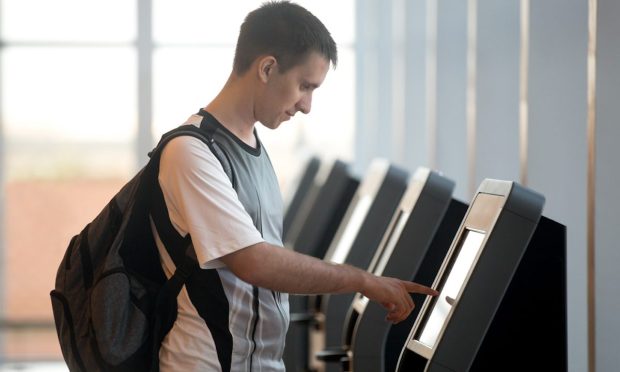Restaurants Woo Tech-Seeking Consumers With QR Code Payments, Self-Service Kiosks

To reach today’s consumers, restaurants’ physical spaces must offer an experience that can hold their own against the frictionless convenience of digital ordering.
After all, large portions of consumers would spend more if offered digital features when they enter restaurants’ stores, revealed findings from this month’s edition of PYMNTS’ Digital Divide study, “The Digital Divide Report: Technology As A Catalyst For Restaurant Purchases,” created in collaboration with Paytronix.
Read more: How Eateries Can Tap Order Throttling Tools as Delivery Demand Grows
The report, which featured a census-balanced survey of more than 2,400 United States adults in early December, found that one in four consumers would be encouraged to make more purchases if a restaurant offered self-service kiosk ordering. Moreover, 23% said the same of access to auto-updated menus in stores, 23% would make more purchases if they could pay with digital wallets, and 19% would make more purchases if they could pay from their own devices using in-store QR codes.
Steph So, head of digital experience at Shake Shack, told PYMNTS in an interview last month that kiosks are largely undervalued as a digital technology key to restaurants’ future success.
“The customer has certainly voted that the experience of ordering on a kiosk versus ordering face-to-face with a person is actually preferred,” she said.
See more: Shake Shack Sees Digital Experience Driven by Dynamic Kitchens
Offering payment options via QR codes, meanwhile, can be a valuable way to keep young consumers engaged, but exclusively relying on these codes can be alienating to older generations.
“People are frustrated, especially people 40 years and older,” Michele Baker Benesch, president of Menu Men, a company that designs and manufacturers print and digital menus, told PYMNTS in a January interview. “Sometimes their phones don’t work. They don’t know how to access the QR code, … and that hampers the entire customer experience.”
Read more: Many Restaurant Customers Feel Alienated by QR Code Menus
Many restaurants, although well under half, have already adopted some of the most in-demand, in-store technologies. Research from the December edition of the Digital Divide report, “The Digital Divide: Delivery Service Aggregators And The Digital Shift,” which asked more than 2,500 U.S. consumers about the technologies implemented at the table-service restaurants and quick service restaurants (QSRs) they visit, found that the former have been quick to adopt QR codes. In fact, 39% of respondents said that table-service restaurants they visit offer the technology, compared to just 29% who said the same of QSRs.
See more: Restaurants Must Sharpen Digital Tools to Match Convenience of Delivery Aggregators
While table-service restaurants may be quicker to offer these own-device payments, QSRs have conversely more readily adopted in-store device payments. Twenty-nine percent of these restaurants offer self-service kiosk ordering, the study found, compared to 25% of table-service restaurants.
If restaurants offer these kinds of features while continuing to make more traditional ordering and payment options available to those who are less keen on adopting new technologies, they can remain relevant to a wider share of today’s diners, boosting spending and visit frequency.